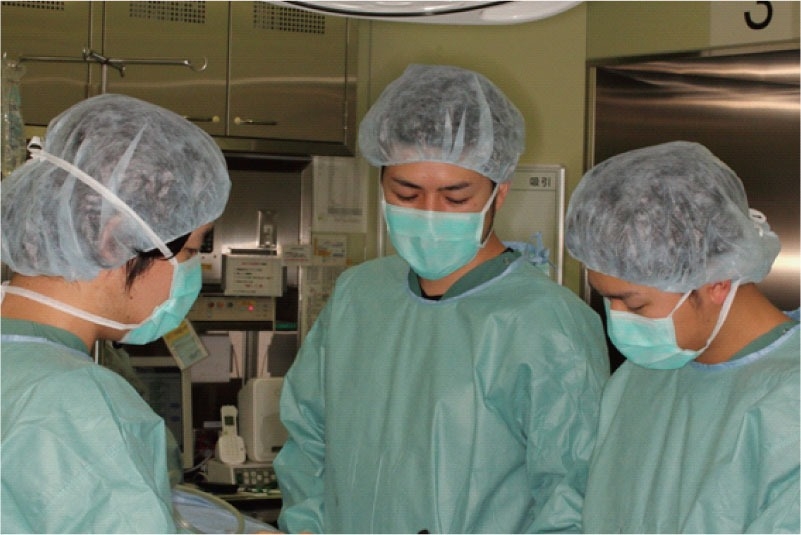Features
We provide medical care for benign and malignant skin tumors in our hospital.
Skin is an organ that can always be seen. With that in mind, we treat patients by considering how to cure tumors cosmetically and radically.
Surgery
- Average number of surgeries in any given year (inside our division including biopsy): About 800
- Surgeries for skin tumors in a year (central operating room) : About 150
- Surgeries for malignant skin tumors (in our division) : About 100
(Approximately 10 cases for malignant melanoma, 30 cases for spiny cell carcinoma, and 30 cases for carcinoma)
Clinical operations and examinations
Skin Valve Forming Technique
In most cases where skin tumors have been cured, treatment had started in the early stages. However, there are appearance issues as a result of large cuts of the skin. At our clinic, if the surgery is around the face or other places where they may be seen easily, we use the skin valve forming technique after resecting the tumor and we make sure the tumors are completely resected. The skin valve forming technique uses your own skin (around the tumor) to re-build the skin where surgery was performed. We assist patients to be cured from skin cancer and cosmetically as well.
Sentinel Lymph Node Biopsy
Sentinel lymph node biopsy is an inspection to check whether cancer has spread beyond the primary tumor into the lymphatic system.
We use sentinel lymph node biopsy to help find the lymph transitions early on.
Surgical Treatment for Chronic Inflammatory such as Pyoderma
We perform surgery for chronic pus disease built up with scars and brazing holes.
Using Ultrasound Tests for Skin Tumors
We use ultrasound when tumors are under the skin surface. It is simple and minimally invasive testing. We also use it to check thickness of the tumors.
Hospitalization

For small tumors, we operate at the clinic. If grafting or skin valve after resection is performed, hospitalization for one to two weeks is necessary. The length of stay depends on the area or the size of the tumor and avoiding postoperative bleeding or risks of dehiscence. In general, we recommend hospitalization from one-night to one week.

